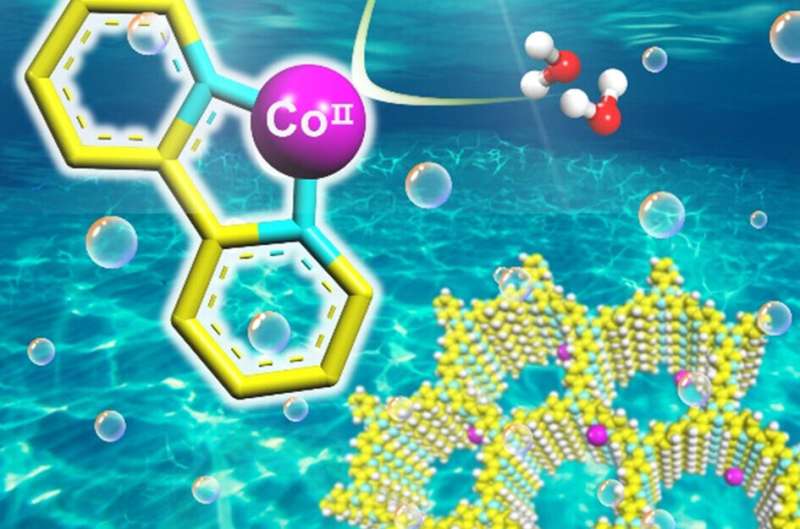This article has been reviewed according to Science X's editorial process and policies. Editors have highlighted the following attributes while ensuring the content's credibility:
fact-checked
trusted source
proofread
Anchoring single Co sites on bipyridine-based covalent triazine frameworks for photocatalytic oxygen evolution

Photocatalytic water splitting using semiconductors is regarded as a promising technique for producing hydrogen fuel from solar energy. The oxygen evolution half reaction has proven to be the bottleneck for photocatalytic overall water splitting owing to the high energy barrier and the sluggish kinetics. It is a big challenge to develop efficient photocatalysts for the advancement of water oxidation.
Similar to graphene carbon nitride, π-stacked covalent triazine frameworks (CTFs) have gained much attention in photocatalytic water splitting in recent years. The fully conjugated structure with the regular channels in the crystalline network will provide defined pathways for efficient charge-carrier transport and inhibit the charge-carrier recombination.
The rich nitrogen content naturally results in the extraordinary heteroatomic effect (HAE), which can affect the electron distribution within the structure. Moreover, distinct advantages of CTFs include their physicochemical properties, such as the band gap position and photoactivity, the possibility of being systematically tuned by selection of monomers, the synthesis strategies and introduction of cocatalyst.
Several strategies have been proposed to promote the photocatalytic oxygen evolution efficiency, including tuning electron-donating phenyl units, increasing crystallinity of the skeleton and exfoliating the bulk materials into ultrathin nanosheets. However, most of the efforts have been focused on the structural design of CTFs or enhancing charge carrier transfer efficiency, while cocatalysts have been largely overlooked.
It should be noted that the metal-based cocatalysts easily aggregate to form nanoparticles due to their high surface energies, and only a small fraction of the atoms on the surface of these nanoparticles can be regarded as active sites, which greatly reduces the photocatalytic efficiency. Hence, inspired by the single atomic catalyst, the development of highly crystalline CTFs with the appropriate energy band structure in combination with the single sites cocatalyst is an effective approach to achieve high performance photocatalytic OER.
Recently, Professor Bien Tan, Xiaoyan Wang, and co-workers from Huazhong University of Science and Technology, China, proposed an effective strategy for anchoring single cobalt sites into a bipyridine-based covalent triazine framework (CTF-Bpy) to enhance photocatalytic oxygen evolution. The paper is published in the Chinese Journal of Catalysis.
The newly developed CTF-Bpy-Co catalyst has exhibited remarkable improvements in photocatalytic oxygen evolution performance, with an oxygen evolution rate of up to 3,359 μmol g–1 h–1 in the initial 1 h and an average oxygen evolution rate of up to 1,503 μmol g–1 h–1 for 5 h (λ ≥ 420 nm), exceeding most of the reported porous organic polymers.
This innovative approach may offer valuable insights for achieving superior performance in photocatalytic overall water splitting without the need for sacrificial agents.
More information: Ruixue Sun et al, Anchoring single Co sites on bipyridine-based covalent triazine framework for efficient photocatalytic oxygen evolution, Chinese Journal of Catalysis (2023). DOI: 10.1016/S1872-2067(23)64552-8
Provided by Chinese Academy of Sciences





















